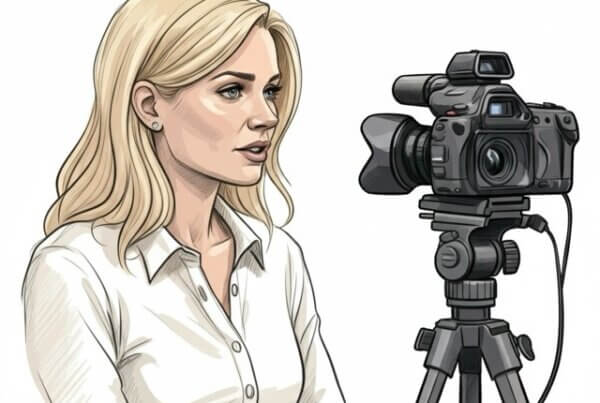Shannon Sharpe: a name synonymous with NFL greatness, outspoken commentary, and undeniable charisma. Recently, however, his name has been linked to serious allegations detailed in a lawsuit alleging sexual assault and battery against an individual who reports knowing him when she was 19. These are serious claims that, regardless of the eventual legal outcome, force us to confront uncomfortable intersections: celebrity power dynamics, the culture surrounding professional sports, masculinity, aggression, mental health, and deeply ingrained societal issues.
For Gen Z and Millennials, especially those grappling with their own mental health or dual diagnosis challenges, headlines like these can be particularly jarring. They can trigger personal experiences and raise difficult questions about heroes, accountability, and the systems we exist within. Let’s try to unpack some of the complex layers involved.
The Allegations and the Difficult Conversation
Context: What is Being Alleged?
According to news reports detailing the civil lawsuit filed in Los Angeles Superior Court, the plaintiff alleges Sharpe sexually assaulted her on multiple occasions, provided gifts and support creating a power imbalance, and made threats. Again, it is crucial to emphasize these are allegations within a lawsuit that will proceed through the legal system.
Speaking Out vs. Staying Silent
Cases involving high-profile figures often ignite debate about victim credibility. It’s essential context that sexual assault is vastly underreported. RAINN (Rape, Abuse & Incest National Network) indicates that the majority of sexual assaults are never reported to the police. Fear of not being believed, retaliation, trauma, shame, and the difficulty of navigating the legal system are significant barriers. While specific athlete aggression statistics are hard to centralize definitively across all sports, discussions around power dynamics and high-profile individuals facing accusations occur frequently, highlighting a potential gap between experienced harm and reported incidents.
Unpacking Contributing Factors in Athletic Environments
Why do discussions about aggression and problematic behavior sometimes seem more frequent around professional athletes? It’s not inherent to the individuals, but potentially influenced by intense environmental factors:
Pressure Cooker Environments
Hyper-Masculine Cultures
Historically, many elite sports environments are dominated by cisgender men and often reinforce traditional, sometimes toxic, norms of masculinity: toughness, stoicism, dominance, suppression of vulnerability, and sometimes aggression being framed as positive or necessary for success.
Performance Over Person
Often, the primary focus is relentlessly on athletic output and winning. Personal development, emotional intelligence, healthy relationship skills, and mental well-being can be sidelined or seen as distractions from peak physical performance. Athletes may be valued more for what they do than who they are as people.
High Stakes & Stressors
The pressure is immense: huge financial incentives, the drive to “make it” against incredible odds, intense public scrutiny, short career spans, frequent travel, and physical pain. These stressors compound, significantly impacting mental health.
The Mental Health Toll on Athletes
While physical fitness is prioritized, mental fitness often lags behind. Studies suggest athletes may experience mental health challenges at rates similar to or even higher than the general population for certain conditions. For example, research referenced by organizations like the NCAA points to significant rates of anxiety and depression among student-athletes, which can persist into professional careers. The intense stress, pressure, and potential for injury can exacerbate underlying conditions or contribute to new ones. Untreated mental health issues can impact judgment, relationships, coping mechanisms, and potentially increase the risk of turning to substances (dual diagnosis) to manage stress or emotional pain.
Normalization of Aggression: From Screens to Culture
The conversation around aggression extends beyond the playing field and into our broader culture, influenced partly by media.
Aggression in Sports Culture
Within certain sports, controlled aggression and physical dominance are essential skills during gameplay. However, the lines can blur, and the same traits celebrated on the field can be problematic if they spill over into personal life without appropriate regulation or understanding of context and consent.
The Influence of Pornography
This is a difficult but necessary aspect to consider. Research and analysis of widely accessible online pornography (which shapes sexual scripts for many young people) show trends toward increased depiction of aggression, degradation, and non-consensual acts presented as entertainment. Practices like choking, slapping, or spitting have become increasingly common tropes. Studies, such as those analyzing content on popular porn sites, have documented the prevalence of such acts . Critically, this content often lacks context around enthusiastic consent, safety, or communication, potentially normalizing behaviors that are dangerous and harmful in real life.
Choking: From Screen Trope to Dangerous Reality
The normalization of choking in pornography is particularly alarming. Medically, non-consensual choking is a form of strangulation, a dangerous act of violence strongly correlated with intimate partner homicide. Its portrayal as common, desired, or harmless in media can dangerously distort perceptions of consent and safety in intimate encounters.
Accountability and Pathways Forward
The Role of Agents and the Industry
Sports organizations, agents, and team management have a critical role to play beyond contracts and performance stats. Implementing comprehensive programs focused on:
- Holistic Development: Including emotional intelligence, healthy relationships, consent education, financial literacy, and media training from early stages (youth leagues, college).
- Mental Health Support: Robust, confidential, and easily accessible mental health resources, destigmatizing their use.
- Accountability Structures: Clear codes of conduct and consistent consequences for problematic behavior.
Creating great athletes should also mean fostering responsible, respectful human beings.
Navigating the Legal System
When allegations arise, it’s vital to understand the legal framework. In the US legal system, the principle of presumption of innocence means an accused person is considered innocent until proven guilty in a court of law based on evidence presented during a trial. This standard (often “beyond a reasonable doubt” in criminal cases, “preponderance of the evidence” in civil cases like Sharpe’s) exists to protect individuals from wrongful conviction. While public opinion and emotional responses often move faster, and while survivors’ voices deserve to be heard and supported, the legal process has specific standards and procedures designed for fairness, even if it sometimes feels slow or unsatisfying. The legal outcome is separate from the broader cultural conversation about behavior, respect, and needed systemic changes.
Moving Towards Solutions: Questions for a Better Future
The situation involving Shannon Sharpe, like others before it, pushes us to confront difficult realities. It highlights the complex interplay between high-pressure sports environments, cultural norms around masculinity and aggression, the often-overlooked mental health needs of athletes, the pervasive influence of media like pornography on attitudes towards sex and violence, and the challenge of balancing accountability with due process. Moving forward requires asking hard questions and seeking real solutions:
- How can sports culture evolve to promote healthier forms of masculinity, emphasizing respect, empathy, and emotional intelligence alongside physical prowess?
- What systemic changes are needed (from youth sports to pro leagues) to genuinely prioritize athletes’ mental health and holistic personal development, not just their performance metrics?
- How do we, as a society and as individuals, critically engage with media (including pornography) that normalizes aggression and potentially harmful sexual acts, and promote media literacy around consent and safety?
- How can educational institutions, sports organizations, and the legal system better work together to address harm, support survivors, and ensure fair processes?
- What does meaningful support look like for athletes struggling with mental health or the impacts of high-stress environments, potentially reducing pathways to problematic behavior or substance use?
Addressing these issues isn’t about canceling individuals but about fostering a culture of accountability, promoting healthier norms, providing robust support systems, and ultimately creating environments where everyone – athletes included – can thrive safely and respectfully. It requires systemic change, open dialogue, and a commitment to supporting both survivors and those struggling, aiming to reduce harm and build a better future within sports and beyond.
By Valerie T.
Resources:
- RAINN (Rape, Abuse & Incest National Network): National Sexual Assault Hotline: 1-800-656-HOPE and https://www.rainn.org
- SAMHSA (Substance Abuse and Mental Health Services Administration): National Helpline: 1-800-662-HELP (4357) and https://www.samhsa.gov/find-help/national-helpline
- National Suicide Prevention Lifeline: Call or text 988.
Disclaimer: This article discusses sensitive topics including alleged sexual assault, mental health, and violence. It is based on publicly available information regarding allegations and discusses broader societal issues. It does not represent findings of fact regarding any specific legal case. Reader discretion is advised. If you are affected by these issues, please reach out to the resources listed above.



